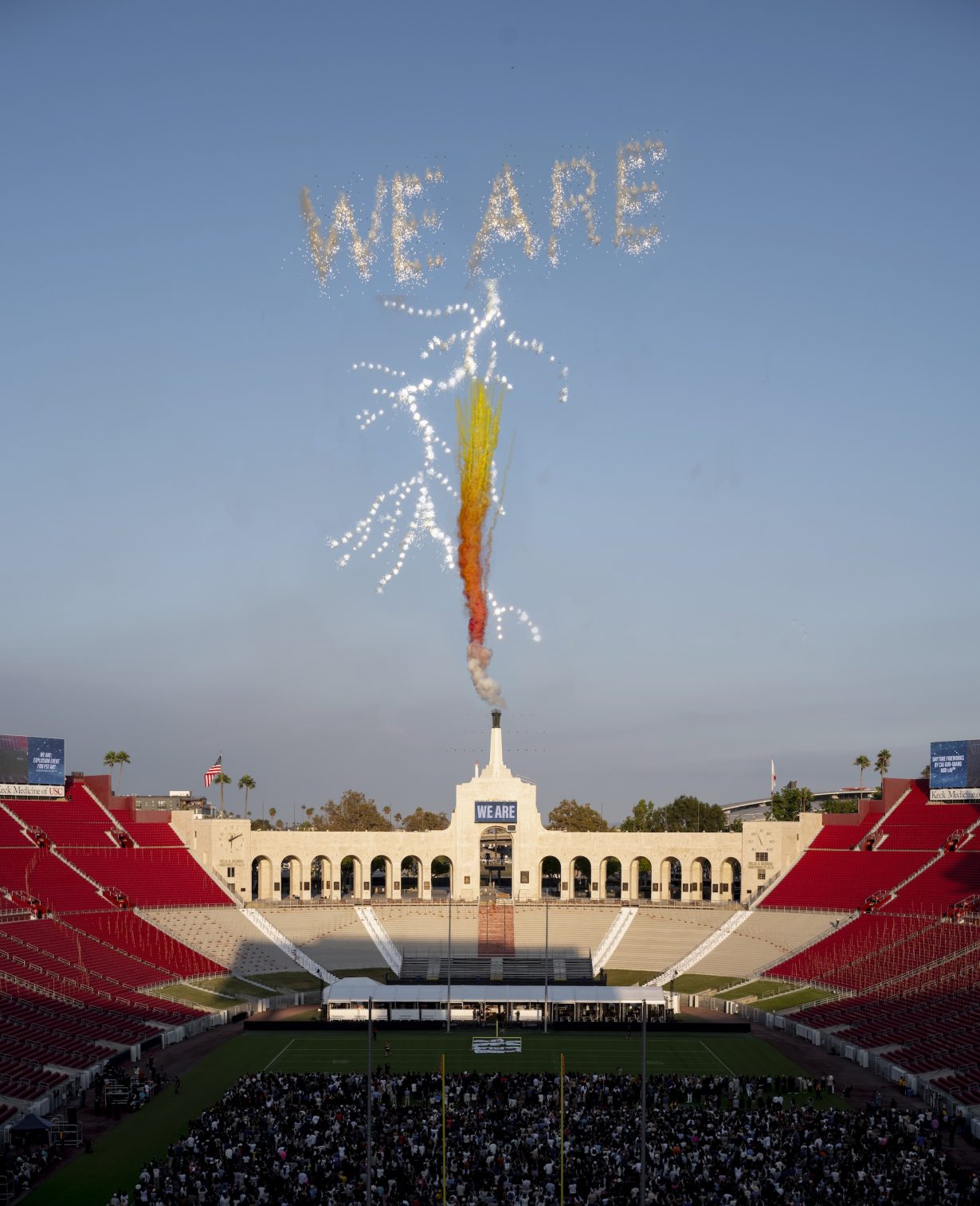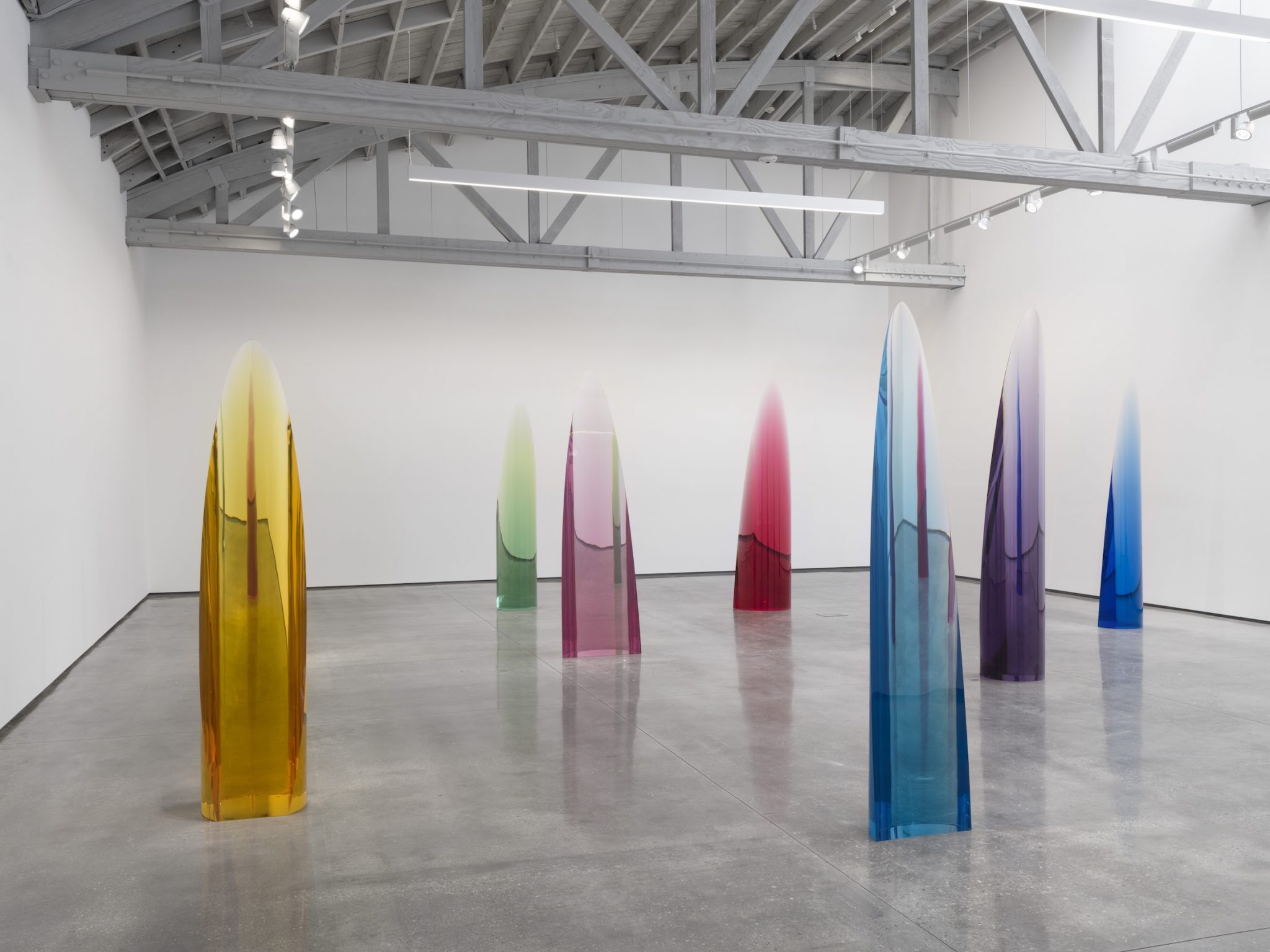Why have one review when you can have three? Here, Claudia Ross wonders if military technology has influenced the foundations of perceptual art
In the early 1960s, Fred Eversley was an engineer at then-Los Angeles-based Wyle Laboratories, a science and technology contractor for NASA’s nearby Jet Propulsion Laboratory and the US Department of Defense. By 1967, he had quit his job, moved to Venice Beach and become an artist – one of a number in LA who would later be dubbed members of the ‘Light and Space’ movement. Access to the region’s STEM institutions and companies – and cheap, available land – allowed Light and Space artists to drastically increase the scale of their sculptures and installations and contend with the East Coast industrial Minimalism of Robert Morris and Donald Judd. Midcentury artists in LA such as Eversley and Helen Pashgian worked with cutting-edge materials and technologies to produce new perceptual experiences – ones enabled by the region’s aerospace and defence industry. From Caltech to Raytheon, this sector continues to haunt the Light and Space movement and its contemporary iterations, many of which are on view in Art and Science Collide.
At first glance, the Light and Space works on view feel refreshingly apolitical. As part of the Getty initiative’s collateral gallery programme, David Kordansky Gallery mounted Cylindrical Lenses, a solo exhibition of Eversley’s recent sculptures. The show features eleven two- to three-metre tall polyurethane monoliths that employ parabolic lenses infused with teal, orange, blue and other shades, their curvatures distorting and refracting the surrounding room. In Caltech’s exhibition Crossing Over: Art and Science at Caltech, 1920–2020, Pashgian lofts a temporary installation of Untitled (2023), a radiant, round pink disc with a concave centre that warps views of the surrounding gallery like a fisheye camera. These works’ pastel shades evoke LA’s soothing candy-coloured sunsets, encouraging meditative optical encounters within the spacious galleries.

Their materials and structures, though, illuminate the ways in which military technology has catalysed one thread of California Minimalism, shaping the foundations of perceptual art. Eversley’s rocketlike, columnal lenses were made from polyurethane resin initially used for military purposes, and many of Eversley’s sculptures are crafted on a 1940s-era ‘turntable’ that originally casted nuclear bomb components; Pashgian’s Untitled was formed from volatile polymer compounds to which she first gained access in 1969 as a resident at Caltech. The lens shape these works utilise echoes the structure of both optical lenses and the high-explosive lens, a component of nuclear implosion bombs that concentrates explosive waves through a concave centre point. In this dark (art) history, new perceptual experiences were made possible by war.
More recent artists merge the fundamentals of the Light and Space movement with spectacular, cinematic technologies, sometimes at the expense of critical approaches. At Pomona College’s Benton Museum of Art, contemporary artist Xin Liu expertly combines film and aerospace history in The White Stone (2021), a single-channel video that explores the ominous results of single-minded, expensive aerospace endeavours; in it, drone shots of impoverished, apocalyptic landscapes alternate with a narrator’s fruitless search for rocket fragments in southwest China. Downtown, Olafur Eliasson’s takeover of MOCA’s Geffen Contemporary in Olafur Eliasson: OPEN feels grandiose in comparison to Liu’s critique. Four floor-to-ceiling conical structures fill the large museum, prompting viewers to look up into them; in Device for seeing potential solar futures (2024), a small, dark enclosure features a shifting orb of light encircled by mirrors that refract the shape and its surrounding environment, creating an illusory black abyss. These works, called ‘viewing machines’, echo Eversley and Pashgian’s lenses, but the results seem to obscure more than they reveal.
At their best, Light and Space artists – and their contemporary descendants – prove a difficult point: art has been and is still influenced by military-related industry, from nuclear bombs to telescopic lenses. (This feels especially true in California, which employs the most federal defence personnel of any state and where the sector generates $190bn in gross economic output annually.) The morbidness of this claim, though, may have gone unnoticed if not for artist Cai Guo-Qiang’s controversial ‘explosion event’ at USC’s Memorial Coliseum (We Are, 2024), which served as Art and Science Collide’s official launch. The daytime fireworks show utilised any defence company’s most primordial material – gunpowder – alongside its future weapons: a fleet of AI-programmed drones flew over the stadium, buzzing eerily. Getty has since apologised for the noisy, fiery spectacle, which resulted in a few attendees requiring first aid treatment. But between ear-splitting detonations and clouds of smoke, I felt a wave of relief that someone was finally saying the quiet part loud.
PST ART: Art and Science Collides at various venues, Los Angeles, through 16 February
PST ART Review, Part 1: Making a Name for LA
PST ART Review, Part 3: Evading Nature
